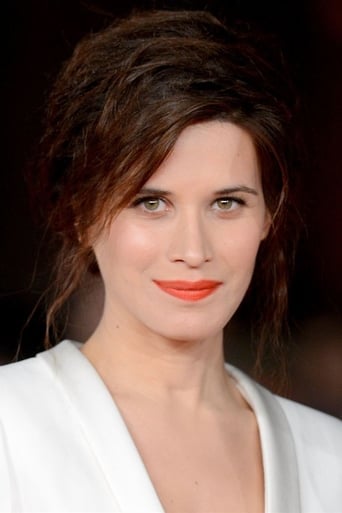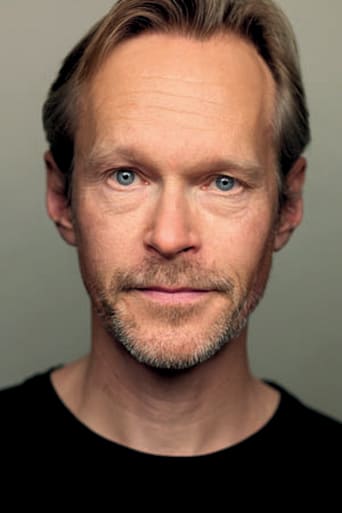Odrek Gonne
Peter Greenaway sustains the same way of montage of the Tulse Luper Part 01, but now the screenplay became more dynamic. It appears that he got a better rhythm in his editing, because I watched the movie and it came to the end as fast as the thoughts that he intercalated in this second part. The subjective text in the screen are now more rich of details and connections, and looks like that have been applied more effort to get a better external photography than in the first movie. Well, people say that Peter Greenaway does some semi-intellectual shitty movies, but it's obviously not true. Anyone who truly enjoys watching Cinema as a piece of art that can be bend and smashed and broke into new ways of perception knows that every new movie of Greenaway is a enjoyable surprise.
Martin Teller
As I suspected, this is starting to get tiring. I don't like the term "self-indulgent," it's not a particularly useful criticism. But if any movie can be called self-indulgent, this is the one. Greenaway is crawling really, really far up his own ass here. That doesn't necessarily mean you can't enjoy it, I'm just pretty sure no one can enjoy it as much as Greenaway can. What I enjoyed most of all were the striking, original filmmaking techniques. Some of the effects going on are extremely cool and not exactly like anything I've seen before. As for the content, it's a mixed bag. In the first part ("Episode 4") I was rather bored and couldn't really follow anything. Episode 5 (in the cinema) was quite a bit more compelling, and features the most direct references to Greenaway's body of work. My attention started to wander again during episode 6. It was nice to see appearances by Ana Torrent and Isabella Rossellini, and certain moments were terrific, but the film as a whole is hard to concentrate on. Not really looking forward to part 3, but I might as well finish for completism's sake.
sprengerguido
I never found Greenaways attempts at serious drama very convincing, after all, his films were less about people than about the attempt to catch the world in some sort of system. So for me, The Tulse Luper Suitcases are a return to form: labyrinthine, witty, and formally the most surreal and over-the-top features Greenaway ever made. Greenaway deliberately dissolves any notion of narrative closure: His film is about the longing for a system that covers the world and at the same time the futility of such an attempt. Tulse Luper leaves 92 suitcases in his life, filled with children, candles, coins; honey, water, gold; body parts, Ingres drawings and 55 men on horseback. In a way, he owns the world in these suitcases, but that does not make him free: He spends most of his life in prison, and each episode of the film (Part 2 covering Episodes 4 - 6) is one prison. Also, the film detonates any attempt to capture the world in full by its form: There are windows in the images that show alternative takes of the same shot, there are repetitions, doublings of text in spoken and written form, the same text spoken in different manners at the same time - it's wild. Greenaway has done this kind of thing before, and it always looked redundant to me. Here it makes sense: The world is just too big, and you have to decide how to relate to it: Either you are paranoiac, trying to piece everything together by Greenaways absurd classification systems, firmly believing in some confused master plan; or you decide that everything is nonsense anyway - but then, what about the links between things, the narrative? I decided to just go with the flow, to enjoy the perfidies and little moments, the beauty and inventiveness of the images, like a complex, multi-layered symphony (the almost perpetual music made that even easier). This is the first time Greenaways ongoing talk about a new cinematic language makes sense to me - although, compared with Godard, it's not as revolutionary as he might imagine. Greenaway, of course, has more to say than just things about classification systems: His dark and desperate world view was never more convincing. Violence and death strike arbitrarily, dumb sexual desires rule history, and the best option you have is try to stand aside and make sarcastic comments. There is oppression, injustice, obsession, gender confusion; nothing is stable, and Tulse's obsession with classification and lists is just a desperate grasp at a world that constantly slips away and bites back. At least, Greeneway makes the attempt look good, and I really enjoyed it.
chadmc
I have only seen part 2.This film was a disappointment and I think it was a waste of the production effort. The production itself is well done; the editing and multi-media composition was well executed. I thought it resembled some of the better interactive CD-ROM experiences. Where the film fails is that is both boring and offensive. Boring in that the events don't have depth and don't create any emotional (and just a little intellectual) stimulation. Offensive in that the film uses sex and violence for shock value without building anything else onto them.





